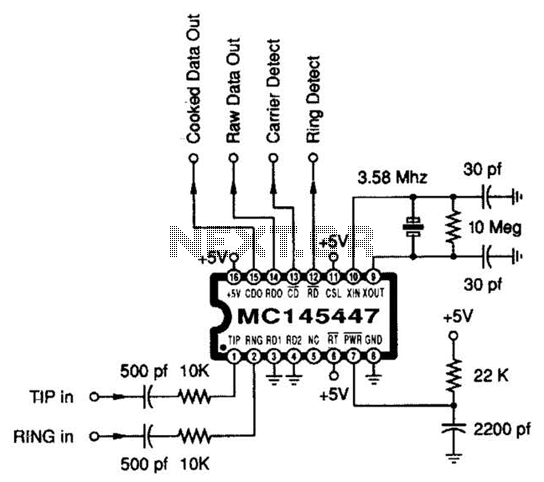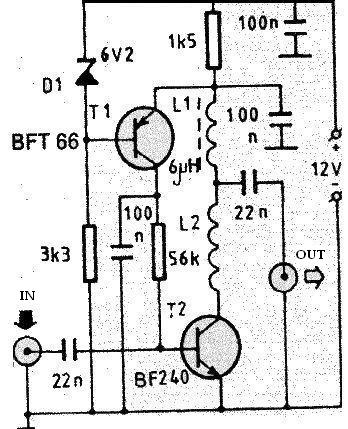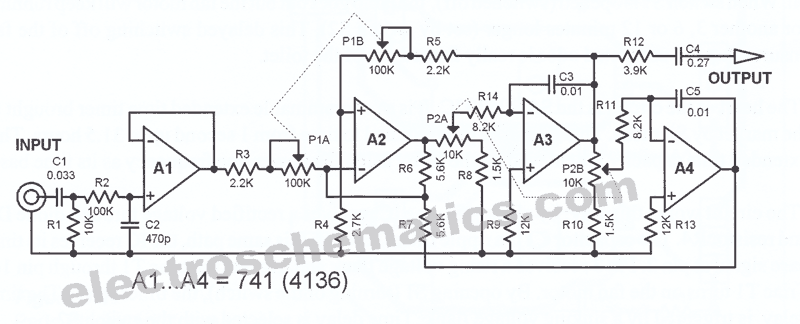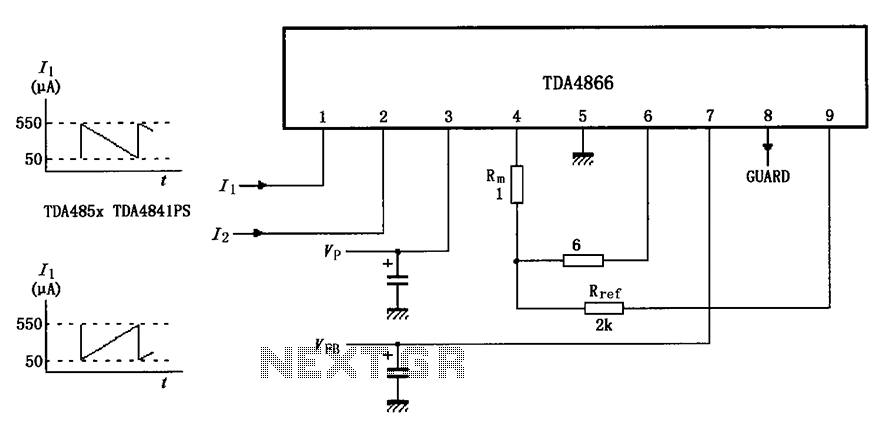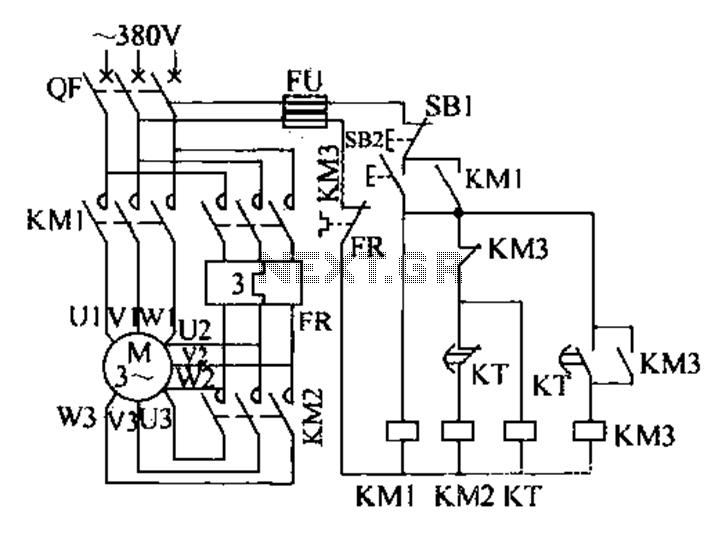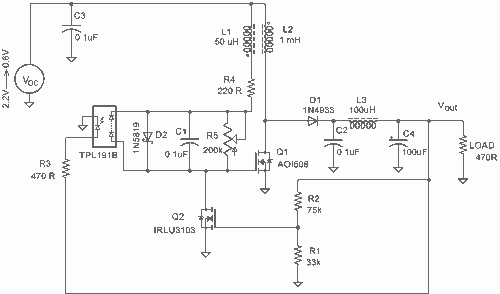
Active FM Antenna Booster circuit
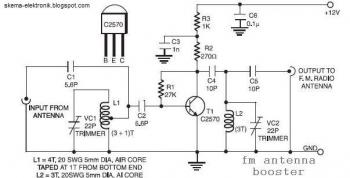
The input coil L1 is composed of four turns of 20 SWG enamelled copper wire, wound slightly spaced over a 5 mm diameter former. It is tapped at the first turn from the ground lead side. Coil L2 is similar to L1 but consists of only three turns. The pin configuration of the transistor 2SC2570 is illustrated in the FM antenna booster schematic. Input/output trimmers (VC1/VC2) should be adjusted for maximum gain.
The circuit features two inductors, L1 and L2, which are critical components in the FM antenna booster design. L1, with four turns, is designed to provide a certain inductance value that enhances the input signal. The use of 20 SWG enamelled copper wire ensures good conductivity and minimizes losses due to resistance. The slightly spaced winding technique may be employed to reduce the coupling between the turns, which can help in tuning the circuit's resonant frequency.
Coil L2, having three turns, serves a similar function but may be tailored for a different frequency or gain requirement. The difference in the number of turns between L1 and L2 allows for fine-tuning of the circuit's performance characteristics. The tapping of L1 at the first turn from the ground lead side indicates that this point may be used for feedback or signal extraction, which is essential for maintaining stability and enhancing the overall gain of the amplifier.
The transistor 2SC2570 is a key active component in this circuit, and its pin configuration is crucial for proper integration into the schematic. This transistor is typically used in RF applications due to its favorable frequency response and gain characteristics. The configuration must be adhered to ensure that the transistor operates within its optimal range.
Adjustable trimmers VC1 and VC2 are included in the design to allow for precise tuning of the input and output stages of the amplifier. By manipulating these trimmers, the user can achieve maximum gain, which is vital for effective signal amplification in an FM antenna application. Proper adjustment ensures that the circuit operates efficiently, minimizing distortion and maximizing signal clarity.
Overall, this schematic emphasizes the importance of component selection and configuration in achieving optimal performance in an FM antenna booster circuit.Input coil L1 consists of four turns of 20SWG enamelled copper wire (slightly space wound) over 5mm diameter former. It is tapped at the first turn from ground lead side. Coil L2 is similar to L1, but has only three turns. Pin configuration of transistor 2SC2570 is shown in the fm antenna booster schematic. Adjust input/output trimmers (VC1/VC2) for maximum gain. 🔗 External reference
The circuit features two inductors, L1 and L2, which are critical components in the FM antenna booster design. L1, with four turns, is designed to provide a certain inductance value that enhances the input signal. The use of 20 SWG enamelled copper wire ensures good conductivity and minimizes losses due to resistance. The slightly spaced winding technique may be employed to reduce the coupling between the turns, which can help in tuning the circuit's resonant frequency.
Coil L2, having three turns, serves a similar function but may be tailored for a different frequency or gain requirement. The difference in the number of turns between L1 and L2 allows for fine-tuning of the circuit's performance characteristics. The tapping of L1 at the first turn from the ground lead side indicates that this point may be used for feedback or signal extraction, which is essential for maintaining stability and enhancing the overall gain of the amplifier.
The transistor 2SC2570 is a key active component in this circuit, and its pin configuration is crucial for proper integration into the schematic. This transistor is typically used in RF applications due to its favorable frequency response and gain characteristics. The configuration must be adhered to ensure that the transistor operates within its optimal range.
Adjustable trimmers VC1 and VC2 are included in the design to allow for precise tuning of the input and output stages of the amplifier. By manipulating these trimmers, the user can achieve maximum gain, which is vital for effective signal amplification in an FM antenna application. Proper adjustment ensures that the circuit operates efficiently, minimizing distortion and maximizing signal clarity.
Overall, this schematic emphasizes the importance of component selection and configuration in achieving optimal performance in an FM antenna booster circuit.Input coil L1 consists of four turns of 20SWG enamelled copper wire (slightly space wound) over 5mm diameter former. It is tapped at the first turn from ground lead side. Coil L2 is similar to L1, but has only three turns. Pin configuration of transistor 2SC2570 is shown in the fm antenna booster schematic. Adjust input/output trimmers (VC1/VC2) for maximum gain. 🔗 External reference
Warning: include(partials/cookie-banner.php): Failed to open stream: Permission denied in /var/www/html/nextgr/view-circuit.php on line 713
Warning: include(): Failed opening 'partials/cookie-banner.php' for inclusion (include_path='.:/usr/share/php') in /var/www/html/nextgr/view-circuit.php on line 713
